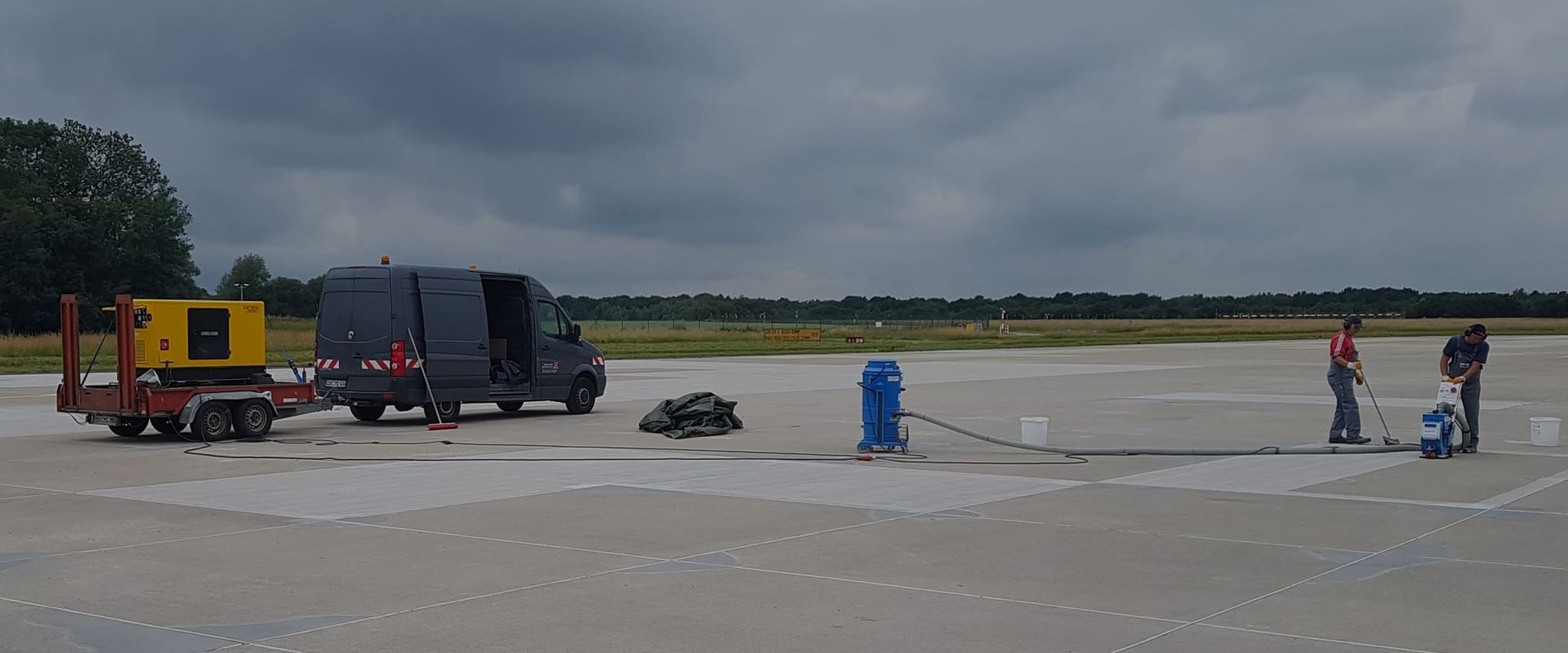Joints Construction Aid for Planners
General joints
Each component and each structure ist more or less on the move during their production, as well as during their action period.
These movements will be caused through:
- deformations (temperature, evanescence, creeping)
- uneven settlements
- uneven pollution
In case this movements will be hindered, strains arises which lead to a split in the construction if it exceeds a special limit. The arising splits are typically not straight-lined and because of this, it is very difficult to control them. Splits can lead to damages of the reinforcement in extensive concrete components if the split wide exceeds 0,3 – 0,4 mm, also by sufficient concrete cover.
It will become more critical if wide splits occur ar the effect of, e.g. dew salt.
Because of this, straight-lined splits – the so called weakening – are given to avoid rough crack initiations.
Joint = the scheduled straight-lined split
We distinguish between:
- dummy joint or
- expansion joint
Joints are always a weak point of a construction.
You have to aware of something:
Without joints, the construction would be even weaker in many cases.
The function of a joint is:
- to avoid rough splits /remedy through dummy and movement joints)
- to equalize the variation of length (movement joint)
- to facilitate working steps (construction joint)
Joints should leave enough clearance for unrestrained movementas for each construction stage.
The movement joint severed the whole component. The joint width – b – is depended on the expected variation of length (see calculation example in the supplement, as well as referance values of the DIN 18540).
Rule of thumb (for exterior joints) b[mm] = 3xL[m] + 10
b = joint width [mm], L = length of the component [m]
The dummy joint is only a notch of 0,25 – 0,30 x density. She represents a weakening of cross-section, on which the load bases the biggest tension. The cross-section will be tear apart on the weakened part if it exceeds the maximun of the contained concrete tension. The upper notch keeps straight-lined and because of this it is easy to fill in/controllable.
Dummy joints can transmit compressive forces.
Joint distances
Due to the complex connection, the are no rigrid, irrevocable information about the maximun joint distances but only referance values.
Entirely for buildings with an increased fire risk, the DIN 18540, Abs. 14.4.2 refers to a ceiling of the joint distances, which should ideally below 30 m. The width of the joints should be al least to 1/1.200.
In the general construction building, the DIN 18540 indicates the reference values for the joint width.
The joint width considers already the practical elasticity of the jointing compound of 25 %.
Requirements of joints in concrete plates
The requirement of joints for the division of the concrete plates is depending on several items.
Some are stated below:
- hickness of plates
- climatic conditions (ind the open or heated buildings)
- local conditions (columns, walls, canals)
- kind of conrete installation (installations equipment)
- possibility to slide on the substructure
- long-term interacted charges
- special requirements at the use
- non-critical crack inspection
Plates in halls
Normal joint distances direct themselves to the expected load.
Larger joint distances up to 20 m, that means a field size of 400 m², are possible at favourable loads and the consideration of special measures. To this belongs:
- good sustainble subfloors
- slide foil on uneven surfaces
- special secure of the joints by dowels
- suitable concrete composition
- protection of the concrete through convering
- sufficient long protection against construction transport
- permanent protection against higher temperature variations



